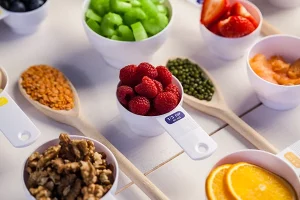Nutrition software is a valuable tool for businesses in the food and nutrition industry. It can help food manufacturers, retailers, and restaurants analyze the nutritional content of their products and ensure they meet regulatory requirements. In this blog, we will explore some of the benefits of using nutrition software for businesses and the different types of software available.
Benefits of Using Nutrition Software for Businesses:
Regulatory Compliance: Nutrition software can help businesses comply with regulatory requirements related to nutrition labelling and claims. The software can analyze the nutrient content of products and ensure they meet legal requirements.
Product Development: Nutrition software can also help businesses in the food industry develop new products. The software can analyze the nutritional content of potential ingredients and help businesses create healthier products.
Brand Loyalty: Consumers are increasingly interested in the nutritional content of the foods they consume. By providing accurate and transparent nutrition information, businesses can build brand loyalty and attract health-conscious consumers.
Professional Use: Nutrition software is also used by professionals in the food and nutrition industry, such as dietitians and nutritionists, to assess the nutritional content of products and create personalized nutrition plans for clients.
Read more: Are Sweet Potatoes Healthy?

Types of Nutrition Software for Businesses:
Laboratory Analysis: Laboratory analysis is the most accurate method of nutrition analysis and is often used by businesses to ensure regulatory compliance. The analysis is typically performed by a third-party laboratory.
Database Analysis: Database analysis involves using a nutrition database, such as the USDA National Nutrient Database, to determine the nutritional content of a product. This method is less expensive than laboratory analysis but may be less accurate.
Recipe Analysis: Recipe analysis involves adding up the nutrient content of all the ingredients in a recipe to determine the nutritional content of the finished product. This method is less expensive than laboratory analysis and can be done manually or using specialized software.
Direct Calculation: Direct calculation involves analyzing the nutritional content of a product based on its chemical composition. This method is most commonly used for processed foods, where the nutrient content can be calculated based on the amounts of different ingredients used.
Read more: How to Read A Nutrition Label
In conclusion, nutrition software is a valuable tool for businesses in the food and nutrition industry. It can help businesses comply with regulatory requirements, develop new products, and build brand loyalty. With the many different types of software available, it is important for businesses to choose a program that best fits their needs and goals.
MenuSano is the best way to generate fact labels. If you’re ready to see how easy and fast it can be to stay compliant with regulations, try a Free Trial of MenuSano today!



















